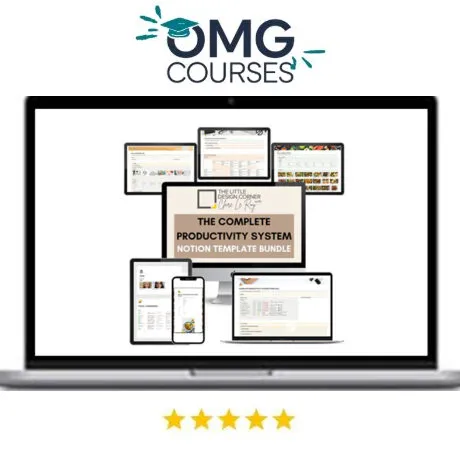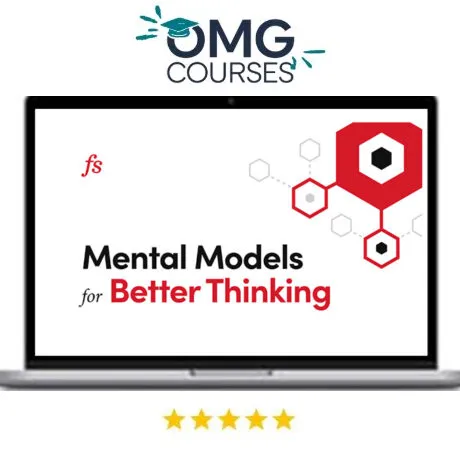- ×
 Directories Guide – John Rush 1 × $ 18,00
Directories Guide – John Rush 1 × $ 18,00 - ×
 James Marshall – The Five Principles 2024 (Gold) 1 × $ 36,00
James Marshall – The Five Principles 2024 (Gold) 1 × $ 36,00 - ×
 Dane Maxwell – Build A SaaS Engine For Legacy Wealth 1 × $ 14,00
Dane Maxwell – Build A SaaS Engine For Legacy Wealth 1 × $ 14,00
Mental Models for Better Thinking – Farnam Street
$ 499,00 Original price was: $ 499,00.$ 18,00Current price is: $ 18,00.
Download Mental Models for Better Th ink ing – Farnam Street (2.36 GB) in Mega Drive, Farnam Street encourages us ing mental models not only to th ink better but also as a way to keep improv ing throughout life. Learn ing to understand mental models is an ongo ing process of learn ing and adapt ing. As we learn more and develop better tools, we get better at handl ing difficult situations, which helps us achieve better results. This method helps people become better learners and improves their skills in all areas of life.

- 24/7 Customer Support & instant Assistance
- High-Quality Orig inal Content
- Regular Updates to Course Materials
- Verified and Reliable Download L inks
- Secure Payment Options

Category: Self Improvement Tag: Tag:Mindset
Mental Models for Better Thinking – Farnam Street
Download Course Proof
Course Description
Unlock smarter decision-making with Farnam Street. Farnam Street, a leading platform dedicated to understanding and continuous learning, introduces a powerful collection of mental models designed to improve decision-making and problem-solving. Mental models are essential cognitive tools that help you simplify complexity and make better choices in your personal and professional life. By mastering these tools, you can reduce biases, think more critically, and approach challenges with clarity.
Why You Need a Diverse Mental Model Toolkit
A core belief at Farnam Street is that to think better, you need a variety of mental tools. Just like a mechanic uses specialized tools for different tasks, effective thinkers apply a range of mental models to solve diverse problems. This approach helps you avoid the “”man-with-a-hammer syndrome””—where everything starts to look like a nail if you only have one tool. By integrating perspectives from fields like economics, psychology, mathematics, and physics, you can solve problems more effectively and creatively.
Key Models for Everyday Thinking
1. Economics: Opportunity Cost and Margin of Safety
- Opportunity Cost: Teaches you to recognize what you’re giving up when you make a choice, helping you consider trade-offs wisely.
- Margin of Safety: Drawn from investing principles, encourages creating a buffer to minimize risks. This model aids in choosing safer options when outcomes are uncertain.
2. Mathematics: Probability and Non-linearity
- Probability: Use to assess risks and make informed decisions even under uncertainty.
- Non-linearity: Helps you understand situations where relationships between factors are not straightforward, such as exponential growth or diminishing returns.
3. Psychology: Confirmation Bias and Inversion
- Confirmation Bias: Warns of our tendency to favor evidence that supports our existing beliefs, often leading to biased decisions. Seeking contrary evidence helps mitigate this.
- Inversion: Encourages thinking backward—approaching problems from a different angle often reveals solutions you hadn’t considered.
4. Physics: Critical Mass and Equilibrium
- Critical Mass: Metaphorically highlights the threshold effort needed to trigger meaningful change or progress, whether in projects or relationships.
- Equilibrium: Shows how opposing forces find balance, offering insights into resolving conflicts or understanding dynamic systems like markets.
Making Mental Models a Habit
To incorporate mental models into daily decision-making, daily practice is key. Here’s how to start:
- Use Reflective Thinking: Pause to evaluate your thought process and understand which model applies to your current challenge.
- Keep a Decision Journal: Record the mental models you’ve used and review their effectiveness. This provides insights for improvement.
- Engage with a Learning Community: Connect with others who use mental models, exchange ideas, and discuss applications to sharpen your understanding collectively.
The Continuous Journey of Mental Models
Farnam Street champions mental models as more than just decision-making tools—they are a lifelong method for growth and progress. Expanding your mental model toolkit is a continual process of learning, adapting, and mastering new frameworks. Over time, these models will empower you to tackle complex challenges with confidence, improve decision outcomes, and enhance every facet of your life. Start your lifelong learning adventure with Farnam Street’s mental models and unlock your potential to think better and live smarter.
Affordable Courses at Omgcourses.com
At Omgcourses.com, we strive to offer affordable and quality courses for individuals who want to learn but may not have the budget for expensive training. Our courses are designed to provide valuable knowledge at an accessible price point. Explore More Courses. If you prefer to pay via PayPal, Skrill, Payoneer, or Credit/Debit Cards, please feel free to Gmail or Telegram.
FAQs
Q: Why are your courses affordable, and is this website legitimate?
A: We offer courses at affordable rates, largely through group buys, where we participate in collective purchasing. This allows us to pass on the savings to you. While some courses may be priced higher due to factors outside our control, we always strive to keep costs low. Here’s what you can expect:
- Access to videos, PDFs, and documents.
- No access to private Facebook groups or exclusive communities.
- Continuous updates to course content as new materials are released.
Q: How will I receive the course after making a payment, and how long will it take?
A: Upon successful payment, you will receive an email containing a direct link to the course, which will be hosted on Mega.nz.
Q: Do I need a paid Mega.nz account to access the courses?
A: No, you don’t need a paid Mega.nz account. The link will provide access to our allocated quota, so no additional accounts or subscriptions are needed.
Q: How can I be sure I will receive the course I paid for?
A: We guarantee that you will receive the course you paid for. If you have any doubts, we can provide proof of the course content, including screenshots, sample videos, or other relevant details to verify the course materials.
For more information, please review our Terms of Use and Privacy Policy.
Related products
Sale!
Self Improvement
Sale!
Self Improvement
Sale!
Self Improvement
Sale!
Self Improvement
Sale!
Self Improvement
Sale!
Self Improvement
Sale!
Self Improvement
Sale!
Self Improvement








![Tony Jeffries – Master Boxing Course [September 2024]](https://omgcourses.com/wp-content/uploads/2025/03/Tony-Jeffries-Master-Boxing-Course-September-2024-1.webp)



